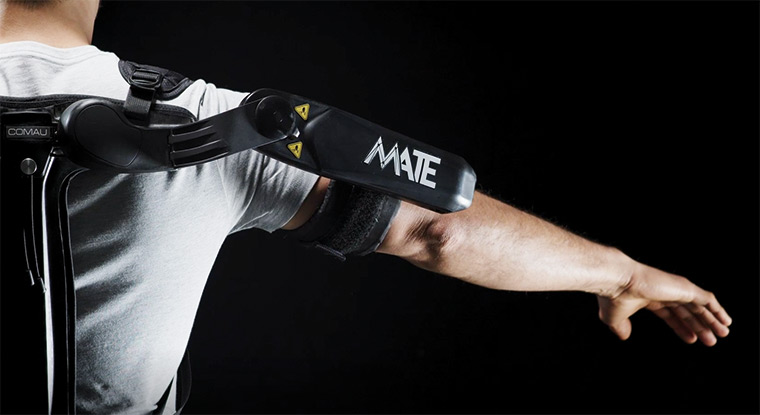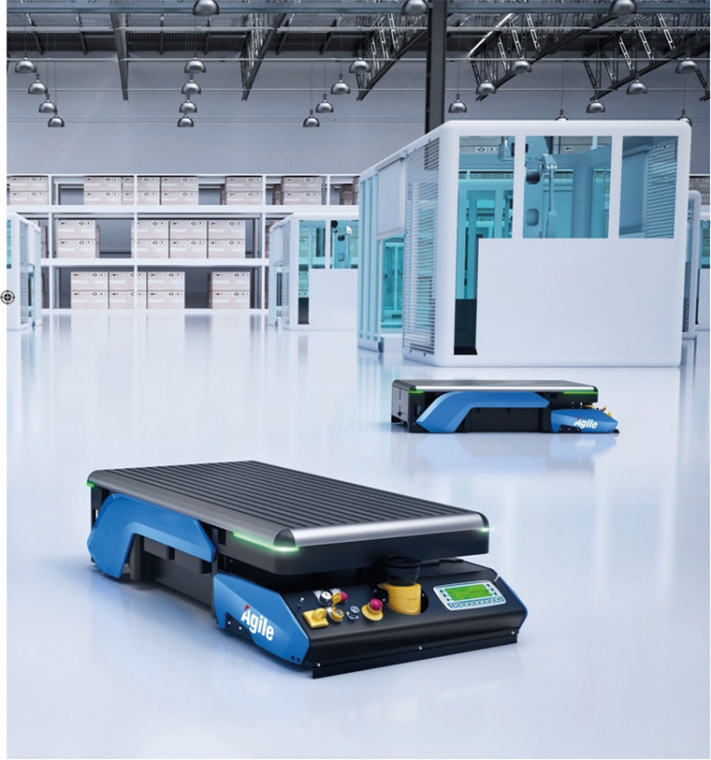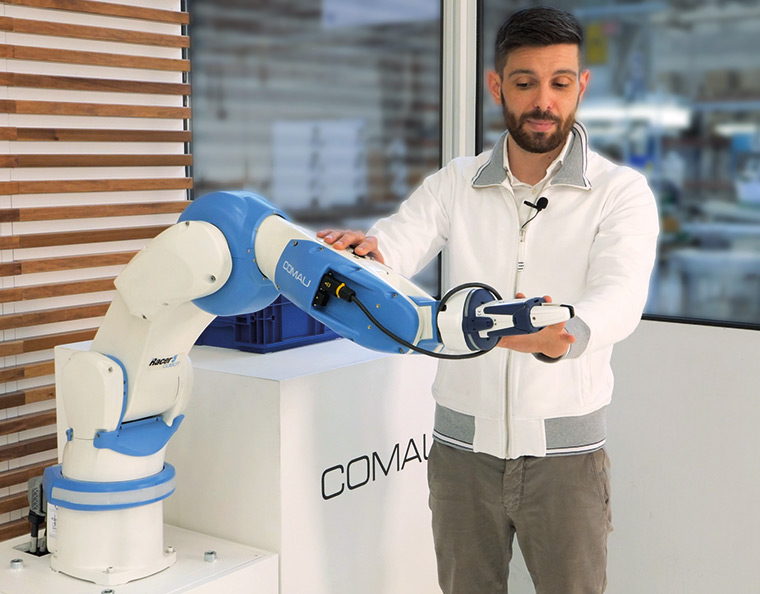
Nigel Hyland, Comau UK commerical manager
.
Founded as the Consorzio Macchine Utensili in 1973, by the mid-80s Comau had already developed its first robotised system. The company soon began its global expansion, opening Comau UK in the early 90s. Today, backed by a full range of competencies, from concept design and engineering to full-line integration, Comau UK provides flexible, tailored and value-added solutions to customers within and beyond the UK, and across various manufacturing and materials management sectors.
In addition to a full range of assembly systems, machine tooling and industrial robotics, its comprehensive portfolio includes Industry 4.0-enabled technologies and interconnected digital solutions. Comau UK also offers the added benefit of leveraging the resources of Comau’s global organisation when needed, while enjoying an extensive and mature supply chain in the UK.
When it comes to automation, Comau UK specialises in helping organisations of all sizes experience higher quality, increased productivity, faster time-to-market and lower overall costs. Yet automation is much more than huge projects, high-speed robots and big numbers. It can be as simple as a solution to lift wood panels above a certain weight.

Comau’s intimate knowledge of process dynamics and workflow optimisation puts the company in a unique position to help the furniture and joinery industry leverage the benefits of what the company calls right-sized automation. In some cases, this involves allowing industrial robots to work safely and securely alongside craftsmen, or using advanced technology such as the MATE-XT wearable exoskeleton to accommodate non-automated lifting, moving and positioning of heavy and cumbersome materials. Automation can also mean letting sensors track, trace and predict, or allowing technology to perform mundane work such that human operators can focus their talents on value-added activities. Finally, automation helps ensure the same quality standard for all finished products, with waste and rework reduced to a minimum.
When approached in a holistic manner, automation can be designed in a simple and incremental way: automate a single process, for example, or deploy flexible AGV-based (autonomous guided vehicle) logistics to move stock, materials and products. The first consideration for any company exploring the benefits of automation is finding a supplier who is also a good consultant. One that can help ascertain the appropriate level of automation, which in some cases could be zero, and analyse the pinch points to create a solution that can positively impact the customer’s bottom line. Take de-palletising and palletising operations, for example. A consultancy-backed approach entails conducting a careful analysis of the process, identifying tailored automation opportunities and working with the customer to determine the quantifiable benefits.
Looking specifically at the needs of furniture and joinery, Comau UK can help identify opportunities to automate existing processes such as machine tending. In other cases, it may make more sense to automate a specific element of a process, such as adhesive application or stud/fastener insertion; or a machining operation such as routing, drilling or cutting. Similarly, for assembly operations, Comau UK can help manufactures identify where routine and repetitive operations for the assembly of standard products could be automated utilising robotic arms or dedicated bespoke systems. Examples include pick and place operations, the mating of components or the use of collaborative robots (COBOTS) to assist with manual processes.

Intralogistics solutions is another interesting opportunity for the furniture and joinery industry, as mentioned earlier. Take the AGILE1500 fully-automated guided vehicle, for example. It can carry up to 1500 kg and is flexible enough to be deployed across a wide range of manufacturing and non-manufacturing scenarios. As such, the AGV can help optimise logistics flows and support customised and efficient production while safeguarding productivity and profitability.
Finally, the benefits of digitalisation should not be ignored, as sensorisation facilitates machine/control integration. It therefore enables companies to gather manufacturing data from key process points, which aids the creation of management information and KPIs. Through sensorisation, Comau UK can grant visibility and tracking of inventory, materials and unfinished products, thus allowing manufacturers to better control production throughput and output.
In addition to enabling production planning and material planning, digitalisation lets the system to communicate with different parts of the operations in a true Industry 4.0 environment. Companies can thus enjoy smart manufacturing capabilities, such as automated logistics that deliver the right materials at the right time based on the actual cycle-time of the manufacturing line.
Applying sensors and data gathering capabilities in key process areas enables condition-based monitoring and maintenance operations, so minimising machine failures, down time, interventions and costs. Digitalisation also allows manufacturers to track and trace parts and products throughout the entire workflow.
Yet while the technology itself is an important enabler, maximising its benefits necessitates a clear understanding of what can and could be achieved and the necessary deliverables to reach the goals. Here is where Comau UK’s consultant-based methodology plays a key role in forming the foundation of a solid and lasting relationship with its customers. By approaching each project as a partner rather than as a supplier of products and services, Comau works in close synergy with each customer to reach common objectives. This is especially helpful when working with companies that are new to automation. In most cases, the adoption of automation for traditionally manual crafts such as furniture and joinery, requires Comau’s experts to guide the process in order to mitigate any fears the customer may have. This also allows Comau to make sure the potential benefits are identified and understood, in order to create appropriate expectations.
The advantages of Comau’s approach are numerous and encompass each phase of the project, from its start throughout its development – beginning with the preliminary discussions, the design execution and installation of the solution at the customer’s workshop, through to its operational management over time. More importantly, Comau’s consultative approach allows us to fully understand the customer’s pain points, and the challenges and objectives within their production processes.
Comau’s team carefully studies the existing set-up to see where inefficiencies lie, where there are bottlenecks in production, where output and productivity need to rise, where costs need to be reduced, and where quality and consistency need to improve. These are the essential elements that enable Comau to maximise results and make manufacturing more productive and more flexible than ever before.
To use a concrete example, integrating collaborative robotics within a highly manual manufacturing approach can be an ideal way to add automation without losing the human aspect of the craft. It can thus become a starting point for businesses looking to increase quality and productivity in a cost-effective manner even in small spaces and within applications such as handling and assembly. This opens the possibility for true autonomy in the robot’s ability to cooperate with humans in complete safety, side-by-side, with each executing their respective tasks to the best of their natural abilities. Such automation can be used for heavy, boring, repetitive and dangerous tasks, or tasks that necessitate extreme speed. In tandem, the human operator focuses on tasks that require intelligence, care and dexterity.

Indeed, Comau’s new Racer-5 COBOT was designed to allow human-operators to focus on value-added operations in tandem or alongside the cobot while the robot performs repetitive tasks. Yet the exciting and unique aspect is that it can automatically and instantly switch from its industrial mode to collaborative mode when a human operator is nearby.
Thanks to this dual nature, Racer-5 COBOT can work at full speed when human operators are not in the vicinity and at collaborative speed when they are – ensuring high productivity and reduced cycle times. In addition, the compact footprint and advanced safety features of the 6-axis articulated robot can help ensure optimal industrial efficiency while granting the added benefit of safe, barrier-free operations.
Another interesting development for the industry is found within artificial intelligence (AI) and advanced vision systems. These key technologies are offering increased control, autonomy and opportunities to undertake tasks once thought impossible to give to a machine.
As both AI and vision technologies can be easily integrated with other systems, machine tools and equipment, they facilitate better interconnection and shared data. They also create a context in which decisions can be taken independently of human intervention, thus maintaining fluidity on the shop floor.
In closing, the powerful technological developments taking place in robotics, digital intelligence, machine inspection and machine recognition will result in radical paradigm changes in multiple sectors. The degree to which is difficult to define, yet applying the correct level of automation, at an acceptable ROI, is something all companies should be looking to address.









